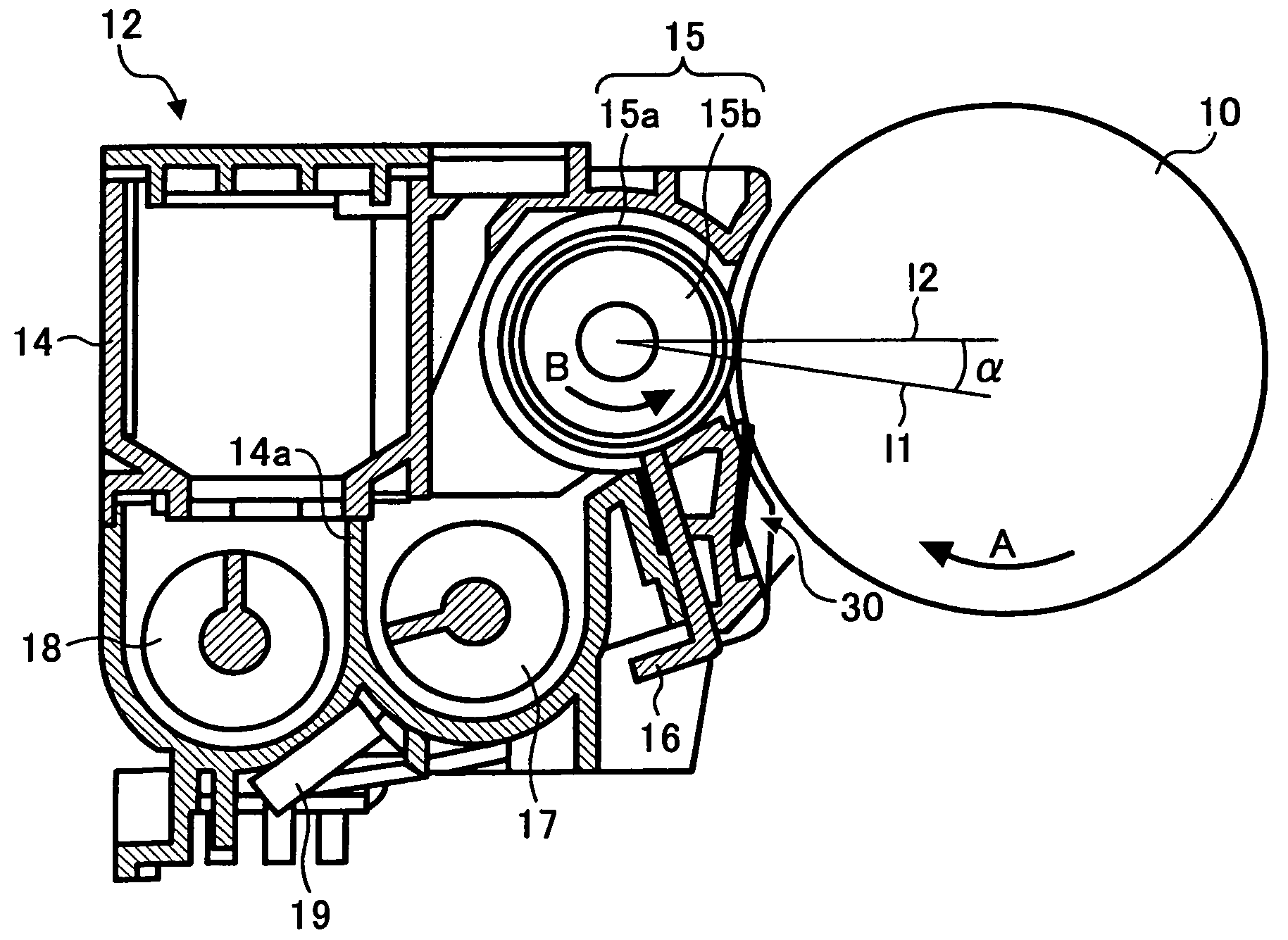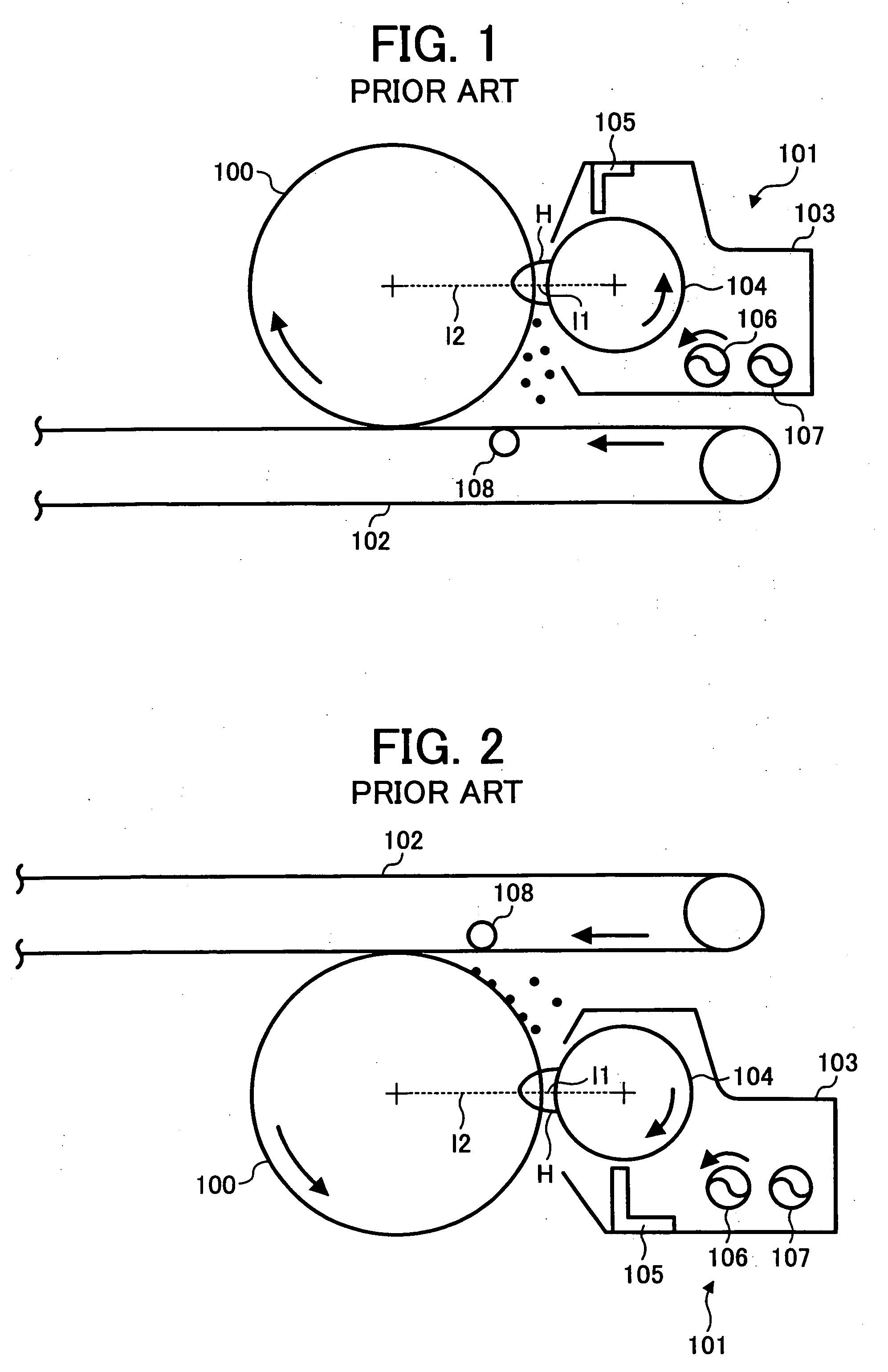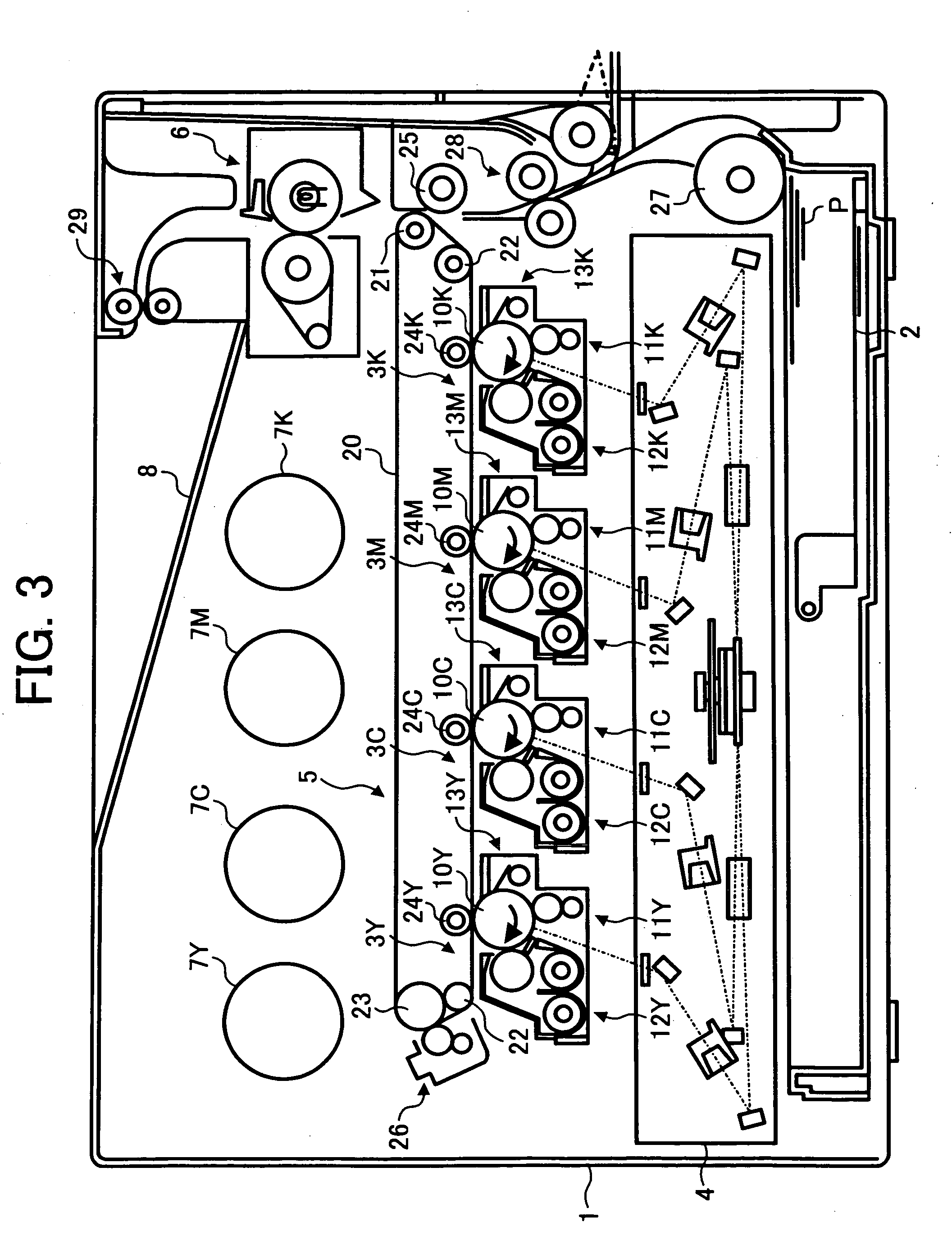Image forming apparatus
a technology of image forming apparatus and forming tube, which is applied in the direction of electrographic process apparatus, instruments, optics, etc., can solve the problems of severe so-called edge effect, unsatisfactory development performance of dc/ac bias development system, and toner to fly off, so as to reduce the occurrence of loss of image density
- Summary
- Abstract
- Description
- Claims
- Application Information
AI Technical Summary
Benefits of technology
Problems solved by technology
Method used
Image
Examples
first embodiment
[0056] First of all, prior art relating to the first embodiment and problems thereof will be described.
[0057] As shown in FIG. 1, for example, conventionally, an image forming apparatus such as a copier, printer or facsimile machine comprises a drum shaped photosensitive body 100 that rotates in the direction of the arrow in the Figure, a developing device 101 arranged to the right in the Figure of the photosensitive body 100, and a transfer belt 102 arranged below the photosensitive body 100. The developing device 101 comprises, within a developing container 103 that is formed with an aperture facing the photosensitive body, 100 a developing roller 104 that carries developer in the developer container 103, a developer regulating member 105 that regulates the layer thickness of the developer on the developing roller 104, and developer feed members 106, 107 that stir and feed the developer in the developing container 104. The toner image that is converted to a visible image on the p...
embodiment 1
[0155] First of all, in a developing device as shown in FIG. 5, the amount of loss of image density in regard to developing magnetic pole angle and toner density under the developing conditions indicated below was measured. The results are shown in FIG. 9.
[0156] (Developing Conditions)
[0157] Linear speed of photosensitive body: 180 mm / sec
[0158] Linear speed ratio of photosensitive body and developing roller: variable range 0.5 to 3.0
[0159] Amount of developer picked up by the developing roller: 55 to 60 mm / cm2
[0160] Developing gap: variable range 0.25 to 0.50 mm
[0161] Toner: polymer toner as set out in this embodiment
[0162] Carrier: iron powder carrier of mass average particle size 35 μm
[0163] Toner density of developer: about 7 wt %
[0164] Developing bias: DC bias
[0165] Measurement of loss of image density was performed by the following method. The measuring device used was NEXSCAN F5100 manufactured by HEIDERBERG Inc. The degree of resolution set was 1200 dpi. A loss of i...
embodiment 2
[0174] Determination of the dependence of the developing performance on the developing gap and / or the linear speed ratio of the photosensitive body and developing roller was conducted under the same development conditions as in the case of embodiment 1. The results are shown in FIG. 11. The method of determination of the development performance was as follows. In general, the developing performance is usually expressed by the inclination of the amount of development deposition on the photosensitive body with respect to the developing bias i.e. the so-called development γ. The weight is measured by using a chart in which block patches of about 5 cm2 are sporadically distributed in the image, forcibly stopping the photosensitive body with the timing with which the toner has been developed onto the photosensitive body and using a suction method to suck up block areas left behind on the photosensitive body. The developing bias is taken along the horizontal axis and the amount of the dep...
PUM
 Login to View More
Login to View More Abstract
Description
Claims
Application Information
 Login to View More
Login to View More - R&D
- Intellectual Property
- Life Sciences
- Materials
- Tech Scout
- Unparalleled Data Quality
- Higher Quality Content
- 60% Fewer Hallucinations
Browse by: Latest US Patents, China's latest patents, Technical Efficacy Thesaurus, Application Domain, Technology Topic, Popular Technical Reports.
© 2025 PatSnap. All rights reserved.Legal|Privacy policy|Modern Slavery Act Transparency Statement|Sitemap|About US| Contact US: help@patsnap.com



